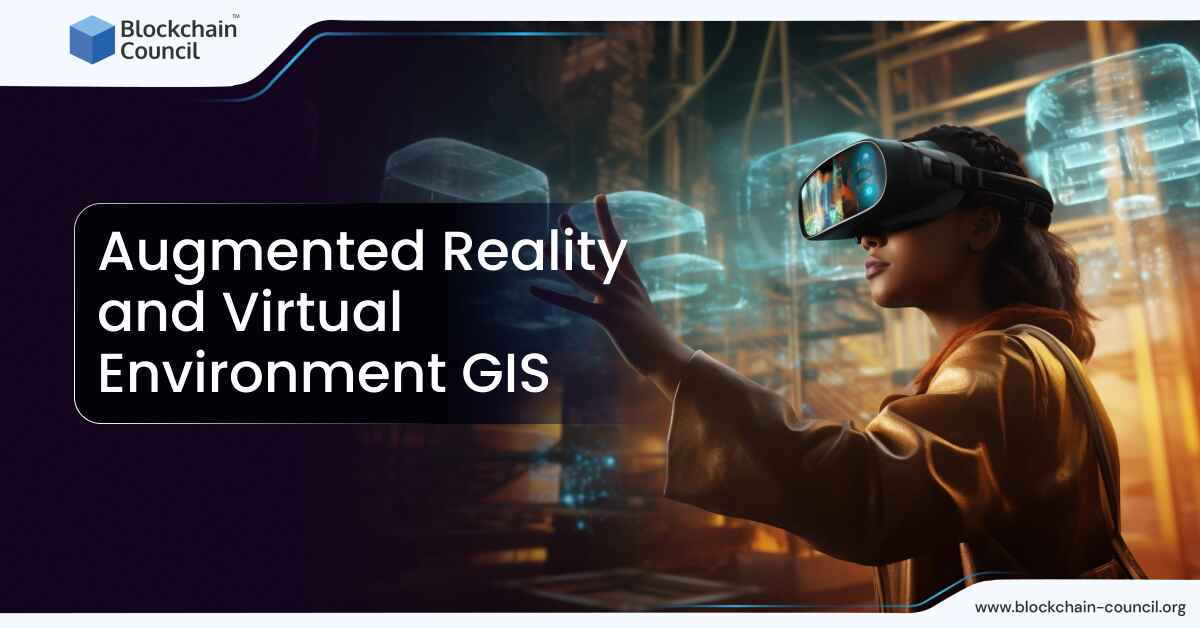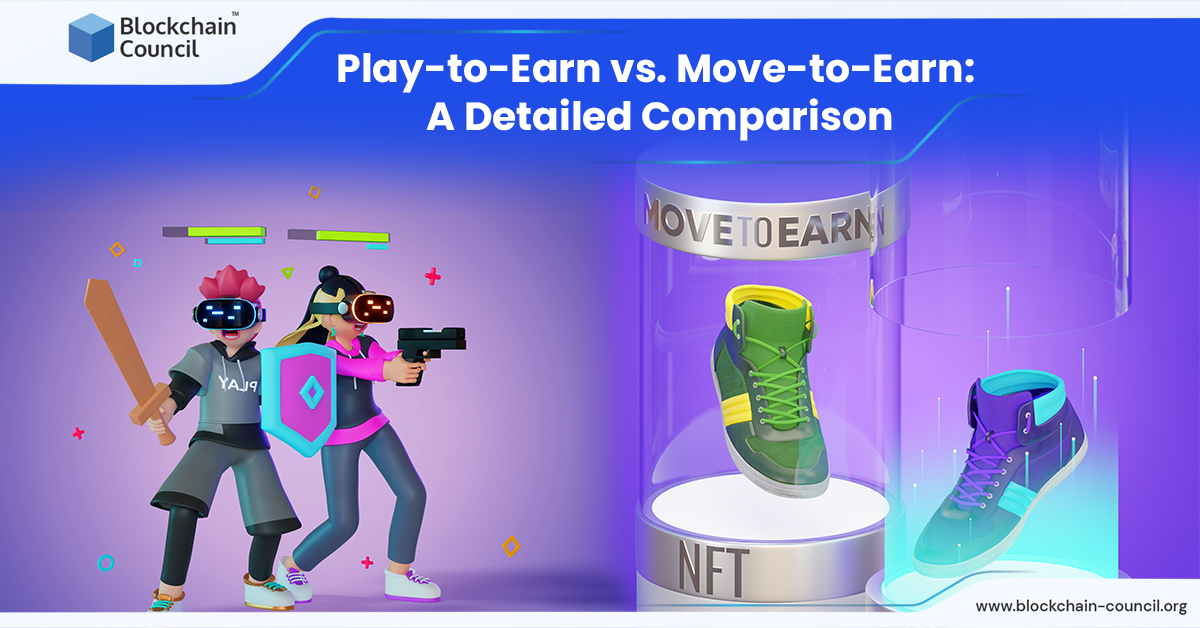
- Blockchain Council
- August 22, 2024
Geographic Information Systems (GIS) have traditionally been rooted in 2D data visualization techniques that represent the real world. Augmented Reality (AR) and Virtual Reality (VR) are transforming it by enhancing the way we visualize and interact with spatial data. These technologies provide immersive and interactive experiences that go beyond traditional 2D maps and static models. Let’s understand what’s the hype around augmented reality and virtual environment GIS.
The Basics of GIS, AR, and VR
Geographic Information Systems (GIS)
GIS is a framework for gathering, managing, and analyzing spatial and geographic data. It combines layers of information to provide a deeper understanding of patterns and relationships within a specific area. Traditional GIS applications often present data in 2D maps, which can limit the user’s ability to fully comprehend spatial relationships and dimensions.
Augmented Reality (AR)
AR overlays digital information onto the physical world, enhancing the user’s perception and interaction with their surroundings. By using devices like smartphones, tablets, or AR glasses, users can see and interact with virtual objects placed in the real world. This technology is beneficial for providing contextual information and interactive experiences.
Virtual Reality (VR)
VR creates a completely immersive digital environment that users can explore and interact with using VR headsets and controllers. Unlike AR, VR does not use the real world as a backdrop, but instead transports users to entirely virtual settings. This is particularly useful for simulations, training, and exploring environments that are difficult or impossible to visit in person.
Applications of AR and VR in GIS
Urban Planning and Architecture
AR and VR significantly benefit urban planning and architecture. Planners and architects can overlay digital models of buildings onto real-world sites using AR, allowing stakeholders to visualize proposed developments in situ. VR can create immersive walkthroughs of future buildings, providing a realistic sense of space and design before construction begins.
Environmental Management
AR and VR technologies enhance environmental management by offering real-time data visualization. AR can display information such as air quality indices, soil contamination levels, and biodiversity metrics directly onto the physical environment. VR can simulate environmental changes over time, helping scientists and policymakers understand potential impacts and devise mitigation strategies.
Emergency Response and Disaster Management
In emergency response, AR can overlay critical information, such as evacuation routes and hazard zones, onto a real-world view, aiding first responders in making quick, informed decisions. VR can be used to train emergency personnel in realistic scenarios, improving preparedness and response capabilities.
Education and Training
Educational institutions use AR and VR to create interactive and engaging learning experiences. For instance, AR can bring historical events to life in a classroom by overlaying historical figures and scenes into the learning environment. VR can transport students to different parts of the world or even back in time, offering experiential learning opportunities that are not possible with traditional methods.
Tourism and Cultural Heritage
AR enhances tourism by providing interactive guides and historical insights at tourist destinations. Visitors can use AR apps to see reconstructions of ancient sites or receive contextual information about landmarks. VR can recreate historical sites, allowing users to explore and experience places of cultural significance from anywhere in the world.
Augmented Reality and Virtual Environment GIS – Real Life Examples
Esri’s 360 VR
Esri’s 360 VR platform allows GIS professionals to create and share panoramic VR experiences for urban planning and environmental impact assessments. This tool has been used in Pasadena to showcase redevelopment projects, helping stakeholders visualize the outcomes effectively.
vGIS for Construction
The vGIS application integrates AR with GIS to improve construction project management. In Toronto, it has been used to overlay digital models of underground utilities onto the real-world view, improving accuracy and safety, and saving time on utility location tasks.
Trimble SiteVision
Trimble SiteVision is a mixed-reality system combining AR with precise geospatial data. It allows users to visualize and interact with digital designs in the real world, enhancing construction coordination and reducing errors.
Esri AuGeo
Esri AuGeo is an AR app that integrates GIS data into mobile systems. It is used for various applications, including urban planning and utility management, by providing real-time spatial data overlays on the real-world view.
Challenges in AR and VR Integration with GIS
Technical Limitations
One of the primary challenges in integrating AR and VR with GIS is the need for significant computing power. Rendering real-time graphics and processing large datasets can strain current hardware capabilities, leading to rapid battery depletion in mobile devices and wearables.
Data Accuracy and Integrity
The effectiveness of AR and VR applications in GIS heavily depends on the accuracy of spatial data. Misalignments or inaccuracies in AR overlays can lead to incorrect interpretations and decisions, particularly in critical applications like urban planning or emergency response.
Privacy and Security
As AR and VR technologies become more pervasive, concerns about privacy and data security arise. Applications that overlay personal or sensitive information in public spaces must navigate the fine line between informative content and potential privacy infringements.
Future Trends and Potential
Real-Time Data Integration
The future of GIS in AR and VR involves the seamless integration of real-time data. This will allow for dynamic updates and interactions based on the latest information. For example, an AR navigation app could provide real-time traffic updates and alternative routes.
AI-Driven Insights
Artificial Intelligence (AI) will enhance AR and VR applications in GIS by providing deeper insights through spatial recognition and data analysis. AI can help identify patterns and make predictions, improving the accuracy and usefulness of GIS data.
Collaborative Mapping
Collaborative mapping in AR and VR environments will enable multiple users to contribute to and interact with a shared spatial dataset. This can be particularly useful for large-scale environmental monitoring and urban planning projects.
Enhanced 3D Visualizations
Future applications will offer more immersive 3D spatial experiences. Users will be able to explore detailed 3D models of geographic data, making it easier to understand complex spatial relationships.
Conclusion
AR and VR are rapidly becoming essential tools in GIS, offering new ways to view, analyze, and interact with spatial data. To learn more about AR and VR and get a high-paying job in these fields, consider enrolling into globally recognized certifications like the Certified AR Developer™ and the Certified Virtual Reality (VR) Developer™. As these technologies continue to evolve, their integration with GIS will likely become more seamless, leading to even more innovative applications that will significantly influence various industries.





































































 Guides
Guides News
News Blockchain
Blockchain Cryptocurrency
& Digital Assets
Cryptocurrency
& Digital Assets Web3
Web3 Metaverse & NFTs
Metaverse & NFTs
